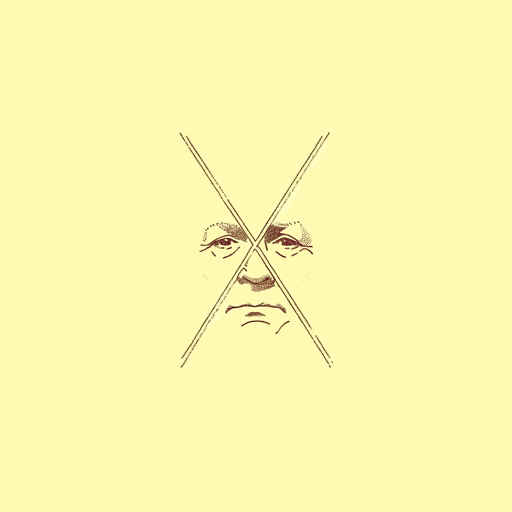42 pages • 1 hour read
Vincent Bugliosi, Curt GentryHelter Skelter
Nonfiction | Book | Adult | Published in 1974A modern alternative to SparkNotes and CliffsNotes, SuperSummary offers high-quality Study Guides with detailed chapter summaries and analysis of major themes, characters, and more.
Summary and Study Guide
Overview
Vincent Bugliosi (1934-2015), the lead prosecutor in the case of the murders committed by Charles Manson and his followers, wrote the book Helter Skelter: The True Story of the Manson Murders as a detailed account of the trial, evidence, and interviews with the witnesses that eventually put these horrific criminals behind bars. Written with the help of ghostwriter Curt Gentry, the book highlights Bugliosi’s insider’s perspective on the events, with detailed explanations of the gory crimes committed and criticism of the failures of law enforcement agencies to bring the killers to justice quickly. Bugliosi won an Edgar Award from the Mystery Writers of America for the best true crime book of the year. This summary refers to the 1994 Norton edition of Helter Skelter.
Plot Summary
Bugliosi opens the book between midnight and 3 o’clock in the morning on Saturday, August 9, 1969, at the Beverly Hills address of 10050 Cielo Drive. It was there that housekeeper Winnifred Chapman discovered the bodies of Sharon Tate and four others. The site was gruesome, with each victim having been stabbed multiple times and the word “PIG” having been scrawled in blood on a door. As Tate and her Hollywood retinue had been doing drugs at the time, the police focused on that as a motive for the massacre. The next night, on Sunday, August 10, the children of Rosemary and Leno LaBianca (ages 38 and 44, respectively) found their parents dead in their home under similarly gruesome circumstances, with words like “DEATH TO PIGS” and “RISE” scrawled in blood. Finding no connection between the two murders, a separate LAPD team focused on gambling connections in the LaBianca case.
It took months and several missteps before the LAPD linked the crimes to Manson—a career criminal with a group of over 20 associates, known as the Family, living communally at Spahn Ranch, an old western movie studio outside of town. During the investigation, Family members had been subjected to mass detention for arson and car theft. Bobby Beausoleil and Susan Atkins, however, had been arrested on a more serious charge: the July 27 torture and murder of Gary Hinman. Atkins, a talkative and severely disturbed member of the family, went on to boast to her fellow inmates about her part in the Tate-LaBianca murders. That, plus the testimony of members of the Family-associated biker gang, the Straight Satans, led to the connection of the two murders and the late-1969 arrest of Manson, Atkins, Patricia Krenwinkel, Leslie Van Houten, and Charles “Tex” Watson.
The prosecution was led by Bugliosi starting November 19, 1969, and from then on, the events in Helter Skelter are told from his perspective. As Bugliosi began to investigate the crime, he toured the Spahn and Barker ranches where the Manson Family lived, conducted several interviews, and looked into the history of Manson and his family. In doing so he got a better perspective of all that had transpired on the nights of the various murders. He came away with a star witness, Linda Kasabian, who acted as a lookout on the nights of the LaBianca-Tate murders. Bugliosi worked out an immunity deal for her eyewitness testimony. Nonetheless, due to the mismanagement and general lack of crime scene evidence, Bugliosi had minimal physical evidence linking the killers to the crimes. Bugliosi decided that the best case against Manson was to try him on criminal conspiracy to commit murder. Manson’s diaries showed the ravings of a violent personality who believed that he was initiating a race war he’d dubbed “Helter Skelter.” In addition to that, his hold on his followers seemed hypnotic.
In the meantime, Manson was allowed briefly to mount his own defense, allowing him to coordinate with the other three women being tried in Los Angeles (Watson was being held in Texas). Together, they planned out coordinated disruptions of the trial, which ultimately did them more harm than good. Soon after, Manson and his associates were provided with a motley assortment of defense attorneys. On June 15, the jury was chosen for The People Vs. Charles Manson. This proved difficult due to the media frenzy around the case. On the first day of the trial, Friday, July 24, and through the weekend, Manson and the women on trial all appeared with an “X” carved onto their foreheads. In his opening arguments, Bugliosi explained that, while the prosecution was under no burden to prove motivation, he would provide one for Manson based on the “Helter Skelter” evidence.
Kasabian’s testimony would take 17 days of examination and cross-examination; her testimony was crucial to Bugliosi’s case. Nevertheless, the trial and sentencing would last for over eight months, longer than any murder trial before. During that time, President Richard Nixon would weigh in on Manson’s guilt, and Manson himself would cause a spectacle, leaping over the desk in an attempt to attack the judge. News of the trial was a daily occurrence, and the jury was sequestered and deeply unhappy by the end of the process. On January 25, the jury came out of deliberation, finding Manson and his associates guilty on counts of murder and criminal conspiracy. After an extensive sentencing trial, on March 29, the jury called for the death penalty for Manson and his three accomplices. In the end, Charles “Tex” Watson went on trial in Los Angeles in August of 1971 and in October was found guilty of seven accounts of first-degree murder, and one account of conspiracy to commit murder. He was sentenced to death. On February 18, 1972, the California Supreme Court abolished the death penalty, and the incarcerated Family members’ sentences were commuted to life in prison, where they remained up to the writing of Bugliosi’s account.

